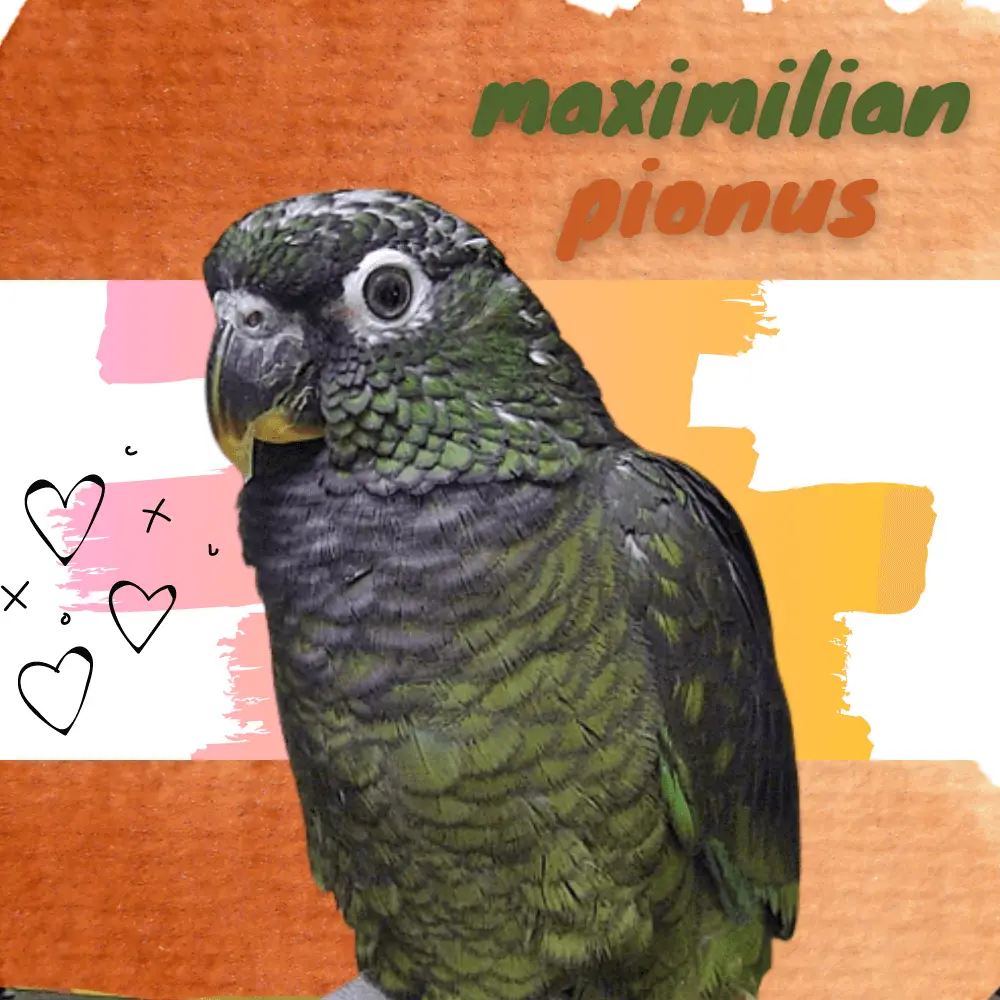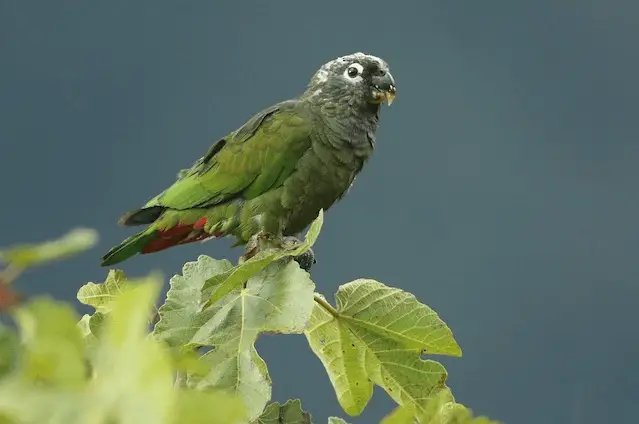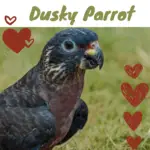
- Pionus maximiliani Maximilian (the reference species)
- Pionus maximiliani melanoblepharus
- Pionus maximiliani siy
- Pionus maximiliani lacerus.
Pionus size
With its 29 to 30 cm approximately for 210 g, it is a small to medium-sized bird depending on the subjects and the largest of all the Pionus.
It’s a very dark color, at first sight, takes on its full dimension in the light of the sun, revealing subtle nuances. Its head feathers are edged in gray, giving them the appearance of small scales.
Its body is pale green above and tapers to bronze below, with numerous feathers tinged with varying shades of olive-brown, blue, and gray on its back and wings.
The skin around its brown eyes is white while its beak is charcoal gray with a horn-colored area where the mandibles meet. Sexual dimorphism being non-existent in him, a DNA test is necessary to distinguish males from females.
Description: There were no obvious differences between males and females in this sample. The plumage of most of the body is dark green, paler, and more bronze brown below.
The forehead is almost black. The head feathers are widely spotted with gray giving it a very typical appearance of this subspecies.
Maximilian Pionus Breeding
Cage
Diet
My Beautiful Male Maximillian Pionus
SOURCE:PippyPets
Maximilian Pionus Reproduction
Reproduction requires the formation of a mature pair, the establishment of a nest-box, and a specific aviary. The female lays three to five eggs and then incubates them for about 26 days.
Spinach and other green vegetables must then appear on his menu regularly, as well as mealworms. Fresh corn is then particularly appreciated too, especially on the cob.
The young are weaned between 2.5 and 3 months. Juveniles are then recognizable by their darker appearance and the less marked presence of purplish-blue on the throat.
He is a friendly, curious, and intelligent parrot who delights his human family. It is a very good choice as a first bird because it knows how to stay relatively calm.
However, he can be exclusive with his owner, even jealous to the point of trying to push back those who come between his beloved master and him. This occurs especially in males.
He does not lack confidence and willingly experiments with the same toys as the largest parrots. It is balanced, which does not prevent it from having character.
He has an excellent memory, so he never forgets what he learns, whether it’s education or games. It’s not a biting bird by nature. With time and patience, he can also learn a few words.
The proximity of neighbors does not pose a particular problem, because the sound volume of his cries is acceptable. For comparison, it is less noisy than a Conure or an Amazon.
This species is robust, but it is also the most sensitive to aspergillosis, so special attention must be paid to the maintenance of its cage and to remove peanuts from its food ration, especially those wrapped in its shell, these peanuts carrying the germ in question.
Maximilian’s Parrot has been in Appendix II of CITES since 1981 because although it is still common in the wild, its population seems to be in a slight decline. Its detention does not require any authorization.
The subspecies of Pionus maximiliani

The other two subspecies differ very little from this description as can be seen from the descriptions below: Scaly-headed parrot melanoblepharus is larger than in the description of the species; it measures 31 cm.
This subspecies is similar to this description but it is much darker in the green coloration of the lower chest, abdomen, and back and recognizable especially in turn with dark eyes. The chest band is also slightly darker and more extensive.
The Maximilian Pionus say is also larger than in the initial description and marks 30 cm. The general appearance is also similar to this description except for the lower abdomen, back, and flight feathers which have a strong sustained bronze tint.
The band on the chest has a slightly reddish-purple tint and is slightly more extensive than in the description. The Pionus maximiliani lacerus is larger and measures 31 cm. It is very similar to Pm say but the bronze tint is weaker.
The band on the chest is more extensive and more bluish.
Discover our other files on the pionus.
Scaly-headed parrot!
SOURCE: Tom Leclercq
Pionus parrot price
Pionus parrot price: 500$ to 2,000$
Pionus parrot lifespan
in captivity Pionus parrot live for up to 40 years, and some can live even longer




















